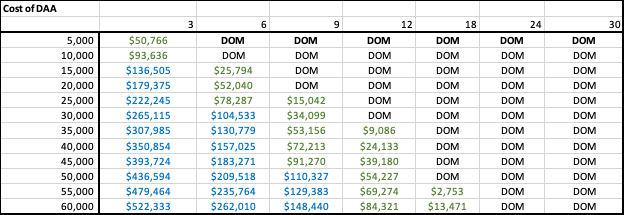Financial Analysis of Donor HCV+ Kidney in HCV- Recipients
1University of Iowa, Iowa City, IA, 2Saint Louis Univ, Saint Louis, MO, 3Washington Univ, Seattle, WA, 4SRTR, Minneapolis, MN, 5Univ of Pennsylvania, Philadelphia, PA
Meeting: 2020 American Transplant Congress
Abstract number: 446
Keywords: Allocation, Donation, Economics, Hepatitis C
Session Information
Session Name: Kidney Deceased Donor Selection III
Session Type: Oral Abstract Session
Date: Saturday, May 30, 2020
Session Time: 3:15pm-4:45pm
 Presentation Time: 4:03pm-4:15pm
Presentation Time: 4:03pm-4:15pm
Location: Virtual
*Purpose: Use of organs from viremic hepatitis C positive donors (dHCV+) in recipients without HCV has been demonstrated to improve access to kidney transplant (KTx). These organs appear to be safe if recipients receive direct-acting antiviral (DAA) medications in the early posttransplant period. However, DAAs add up to $50,000 to the cost of the transplant. This economic analysis examined the benefit of dHCV+ transplant given varying reductions in waiting times for a low kidney donor profile (KDPI) dHCV- KTx and the cost of DAA.
*Methods: Linked Medicare and national Scientific Registry of Transplant Recipients (SRTR) data for 18,037 KTx were used to estimate Medicare payments per month on the waiting list, for the transplant hospitalization, during follow-up, and in the event of graft loss/death. Patient and graft survival rates were derived from recent SRTR reports. A statistical model was developed to estimate the reduction in waiting time needed to justify use of dHVC+ organs given varying DAA treatment costs, with a base estimate of $25,000.
*Results: The initial cost of dHCV+ kidney transplant ($126,898.63) was higher than for dHCV-/low KDPI ($98,331.63) transplant including DAA. In the base case analysis, cost was equivalent given a 10.3 month reduction in waiting, resulting in improved patient survival at 36 months (94.7%) compared with waiting for a dHCV- organ (85.0%) or remaining on dialysis (67.1%). Two-way sensitivity analysis was performed, varying expected waiting time for a dHCV- organ and the cost of DAAs to assess the cost per year of life saved at 36 months (Table). This analysis demonstrated that dHCV+ KTx was the dominant strategy if waiting times could be reduced by at least 24 months. Conversely, dHCV+ KTx was more expensive if waiting time reduction was less than 6 months and DAA cost at least $10,000, although the cost per life-year remained acceptable.
*Conclusions: Use of dHCV+ organs can potentially expand access to KTx. Economically, the benefit of dHCV+ transplant will differ based on reductions in expected waiting time for a given patient and the cost of DAA treatment.
To cite this abstract in AMA style:
Axelrod D, Lentine K, Balakrishnan R, Alhamad T, Chang S, Xiao H, Kasiske B, Schnitzler M, Bloom R. Financial Analysis of Donor HCV+ Kidney in HCV- Recipients [abstract]. Am J Transplant. 2020; 20 (suppl 3). https://atcmeetingabstracts.com/abstract/financial-analysis-of-donor-hcv-kidney-in-hcv-recipients/. Accessed December 30, 2025.« Back to 2020 American Transplant Congress

